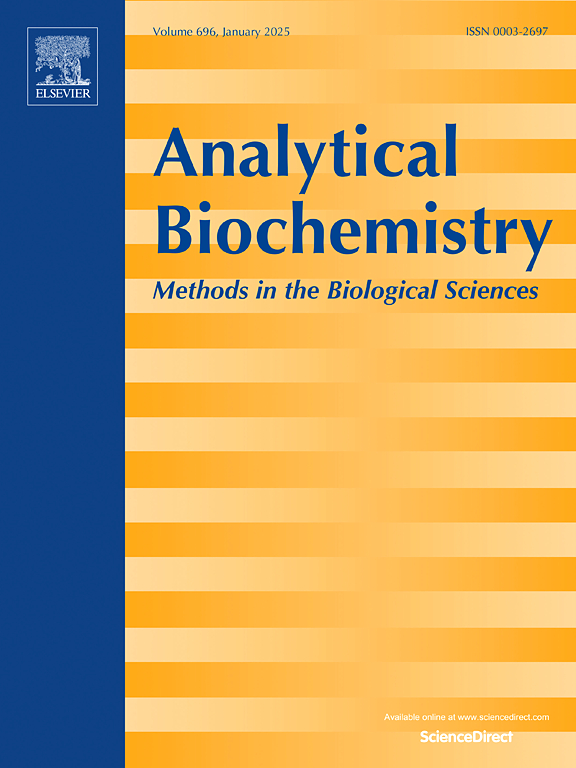Simultaneous analysis of 7 key mevalonate pathway intermediates using liquid chromatography-orbitrap mass spectrometry
IF 2.5
4区 生物学
Q2 BIOCHEMICAL RESEARCH METHODS
引用次数: 0
Abstract
The mevalonate (MVA) pathway is a central metabolic route that converts mevalonate into isoprenoids, which are of crucial significance in various cellular processes. As no systematic approach had been developed and validated for the simultaneous estimation of these intermediate metabolites within the MVA pathway. In this research, a method was developed for the concurrent determination of 7 key intermediate metabolites in the MVA pathway based on ultra-high performance liquid chromatography (UPLC) coupled with a quadrupole/electrostatic field orbitrap high-resolution mass spectrometry (HRMS). The developed UPLC-HRMS method based on the hydrophilic interaction liquid chromatography (HILIC) separation mode was successfully applied to the quantitative analysis of relevant key intermediate metabolites in wild type Escherichia coli (E. coli) BL21 (DE3) and the recombinant E. coli BL21 (DE3) system constructed by introducing all the genes of the MVA pathway into the strain. The above results can offer a reference for further studies on the MVA pathway.

液相色谱-轨道阱质谱法同时分析甲羟戊酸途径7种关键中间体。
甲羟戊酸(MVA)途径是将甲羟戊酸转化为类异戊二烯的中心代谢途径,在各种细胞过程中具有重要意义。由于没有系统的方法被开发和验证来同时估计MVA途径中的这些中间代谢物。本研究建立了一种基于超高效液相色谱(UPLC)耦合四极杆/静电场轨道阱高分辨率质谱(HRMS)同时测定MVA途径中7种关键中间代谢物的方法。建立了基于亲水相互作用液相色谱(HILIC)分离模式的UPLC-HRMS方法,成功地应用于野生型大肠杆菌(E. coli) BL21(DE3)和将MVA途径全部基因导入菌株构建的重组大肠杆菌BL21(DE3)体系中相关关键中间代谢物的定量分析。以上结果可为进一步研究MVA通路提供参考。
本文章由计算机程序翻译,如有差异,请以英文原文为准。
求助全文
约1分钟内获得全文
求助全文
来源期刊

Analytical biochemistry
生物-分析化学
CiteScore
5.70
自引率
0.00%
发文量
283
审稿时长
44 days
期刊介绍:
The journal''s title Analytical Biochemistry: Methods in the Biological Sciences declares its broad scope: methods for the basic biological sciences that include biochemistry, molecular genetics, cell biology, proteomics, immunology, bioinformatics and wherever the frontiers of research take the field.
The emphasis is on methods from the strictly analytical to the more preparative that would include novel approaches to protein purification as well as improvements in cell and organ culture. The actual techniques are equally inclusive ranging from aptamers to zymology.
The journal has been particularly active in:
-Analytical techniques for biological molecules-
Aptamer selection and utilization-
Biosensors-
Chromatography-
Cloning, sequencing and mutagenesis-
Electrochemical methods-
Electrophoresis-
Enzyme characterization methods-
Immunological approaches-
Mass spectrometry of proteins and nucleic acids-
Metabolomics-
Nano level techniques-
Optical spectroscopy in all its forms.
The journal is reluctant to include most drug and strictly clinical studies as there are more suitable publication platforms for these types of papers.
 求助内容:
求助内容: 应助结果提醒方式:
应助结果提醒方式:


